Context:
This Article is based on the news “France becomes the only country to explicitly guarantee abortion as a constitutional right” which was published in the Indian Express. Recently, France has become the only country to explicitly guarantee abortion as a constitutional right.
France Makes Abortion a Constitutional Right
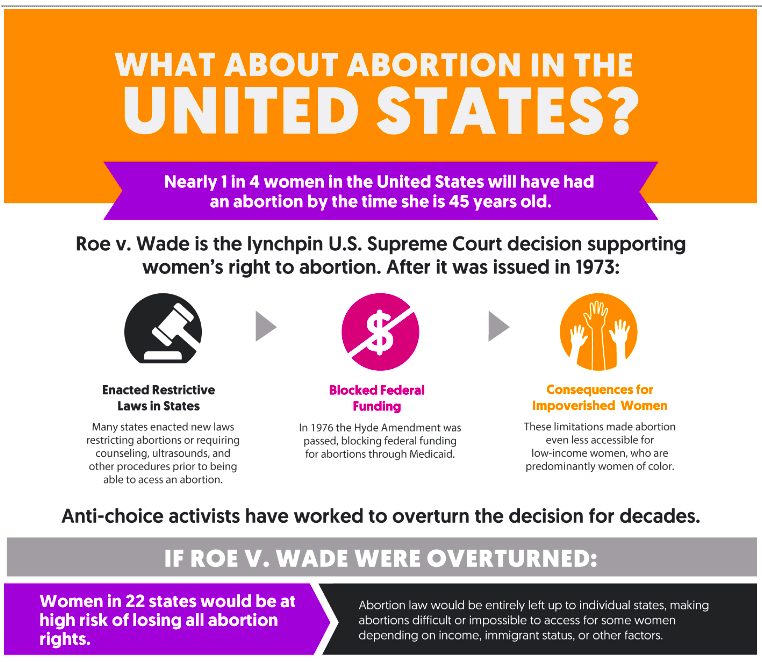
- Recent developments in the US, where the right to abortion was removed by the Supreme Court in 2022 by overturning the US Supreme Court’s ruling in Roe vs Wade (1973) prompted a re-evaluation of abortion rights globally, impacted France to provide a Constitutional Guarantee.
About Amendment of the French Abortion Law:
-
Decriminalization in 1975:
-
- France decriminalized abortion in 1975, aligning with its commitment to reproductive rights.
- Constitutional Right in 2024: By amending the Article 34 of the French Constitution. It specifies the law determining the conditions by which the freedom of women to have recourse to an abortion is guaranteed.
- Amendment to the Article 34 of the French Constitution: To specify the law determining the conditions by which the freedom of women to have recourse to an abortion, which is guaranteed.
- Article 34 of the French Constitution: It grants the French Parliament the authority to legislate on matters related to abortion, defining the conditions under which abortion is permitted, and regulating healthcare facilities that provide abortion services.
Global Abortion Laws:
-
Countries Banned Abortions:
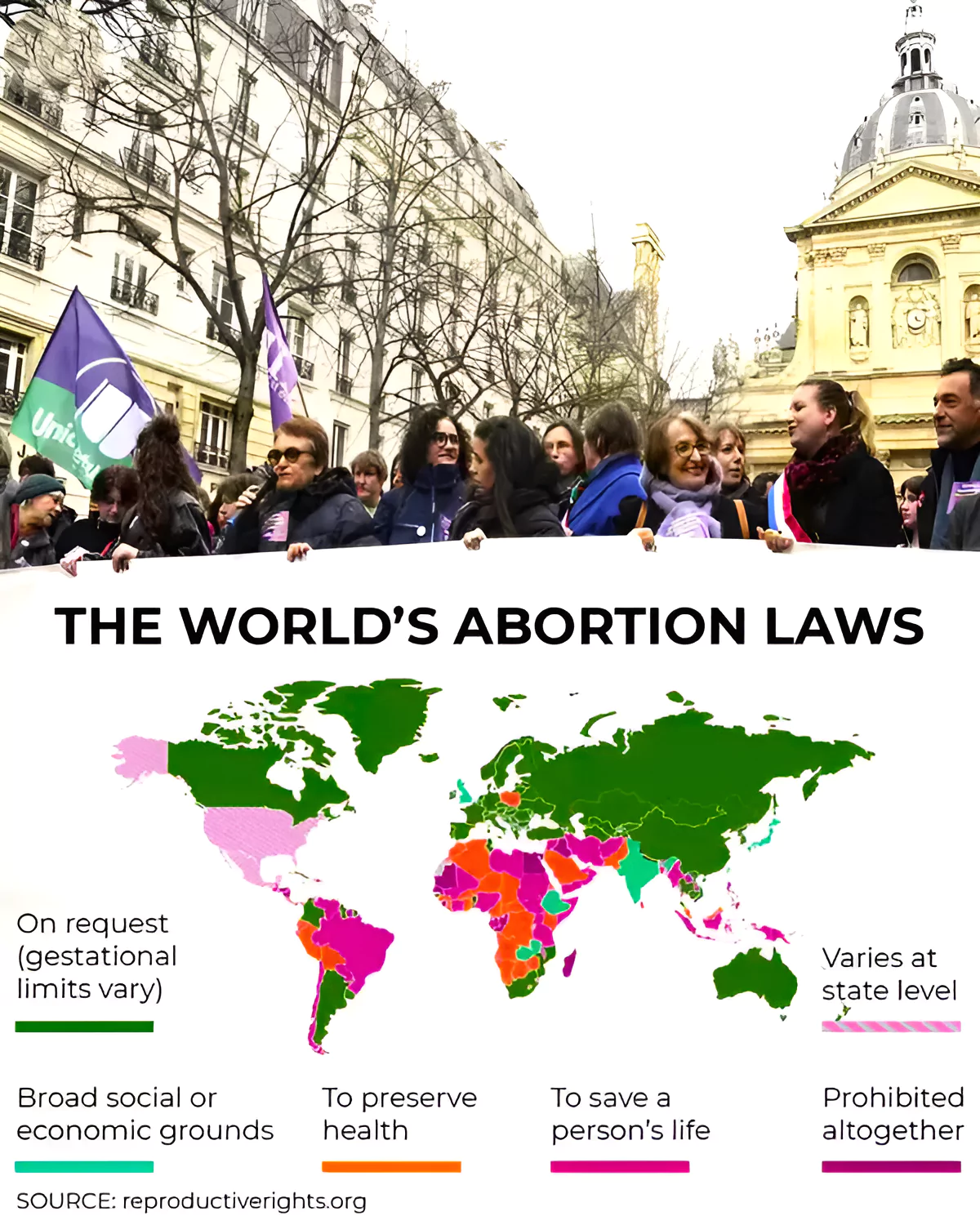
-
- Abortions are illegal in 24 countries, where about 90 million or 5% of women of reproductive age reside.
- These include:
- In Africa: Senegal, Mauritania, and Egypt
- In Asia: Laos and the Philippines
- In Central America: El Salvador and Honduras
- In Europe: Poland and Malta
-
Countries with Significant Restrictions:
-
- Around 50 Countries, including Libya, Indonesia, Nigeria, Iran, Venezuela- permit abortions if a woman’s health is at risk. Several others allow it in cases of rape, incest or foetal abnormality.
-
Countries with Accessible Abortion Laws:
-
- In Canada, Australia and much of Europe there are few restrictions other than gestational limits. New Zealand decriminalised abortions in 2020, extending the legal period to 20 weeks of pregnancy.
-
Countries with Stringent Laws:
-
- Some countries with hardline laws imprison women for getting an abortion, such as El Salvador where several women undergone abortions have been found guilty of “aggravated homicide”, including in cases of miscarriage.
Concerning Abortion Statistics by World Health Organization (WHO)
- High Number of Induced Abortions: Around 73 million induced abortions (means, a pregnancy ended intentionally) take place worldwide each year.
- 6 out of 10 (61%) of all unintended pregnancies, and 3 out of 10 (29%) of all pregnancies, end in induced abortion.
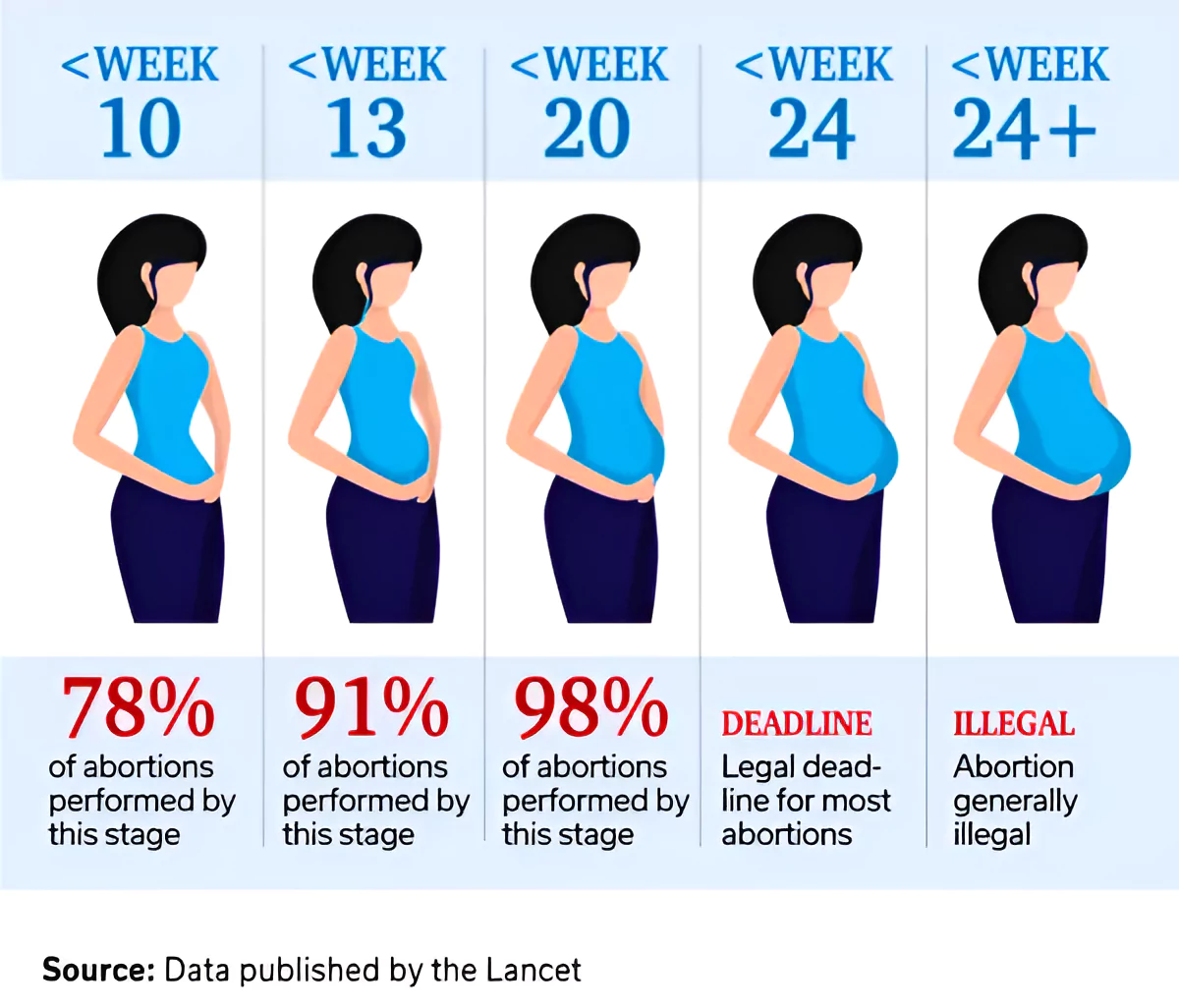 Unsafe Abortions: Around 45% of all abortions are unsafe, of which 97% take place in developing countries.
Unsafe Abortions: Around 45% of all abortions are unsafe, of which 97% take place in developing countries.-
- WHO’s Safety Classification: The WHO has classified abortion procedures into three categories, namely, safe, less-safe and least-safe.
- Lancet study from 2010 to 2014 showed 54% of abortions were safe, 30% were less safe, and 14% were least safe.
- The developing world accounted for more than 97% of abortions classified under the latter two categories.
Status of Abortion in India
Data by United Nations Population Fund (UNFPA)’s State of the World Population Report 2022:
-
Unsafe abortions:
- These are the third leading cause of maternal mortality in India, and close to 8 women die from causes related to unsafe abortions each day.
- Between 2007-2011, 67% of abortions in India were classified as unsafe.
-
Unintended Pregnancies:
- It has found that 121 million unintended pregnancies occur every year globally, an average of 331,000 a day. One in seven unintended pregnancies in the world take place in India.
- Studies from India indicate unintended pregnancies are associated with lower maternal healthcare utilisation and poorer infant and maternal health outcomes.
- Women between the ages of 15–19 are at the highest risk of dying from an abortion-related complication.
Abortion Policy in India
- Gestation: It is the period of time between conception and birth. During this time, the baby grows and develops inside the mother’s womb.
|
-
Requirement of Approval:
- There is no upper gestation limit for the procedure in cases of foetal disability as long as a medical board approves it.
-
Challenge of Foetal Viability:
- The test of “foetal viability” is a new factor that could potentially set back progress made over the years.
-
Progressive in Comparison to Others:
-
- India’s legal framework on abortion is largely considered progressive, especially in comparison to many countries including the US where abortion restrictions are severely restricted — both historically and at present.
Evolution of Abortion Law in India
- Pre-1960s: Abortion was illegal and punishable under Section 312 of the Indian Penal Code (IPC).
- 1964: Formation of Shantilal Shah Committee
- Task: To examine abortion-related matters and the necessity of laws around abortion in India.
- Recommendation: Liberalization of abortion laws to reduce unsafe abortions and maternal mortality.
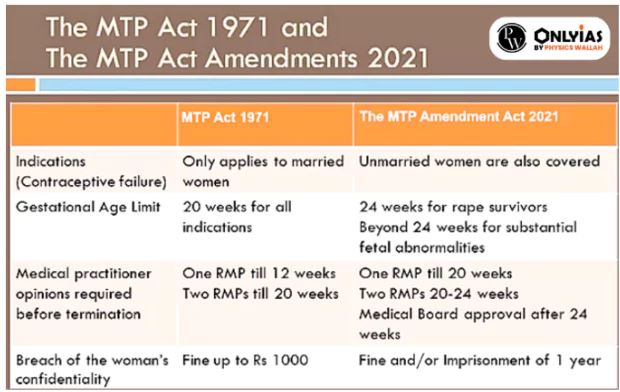 1971: Introduction and Passage of MTP Act
1971: Introduction and Passage of MTP Act
- Introduction: It was introduced and passed by Parliament in August 1971, based on the recommendations of the Shantilal Shah Committee.
- Provision: It allowed abortion up to 20 weeks of pregnancy and granted immunity to doctors performing abortions in line with its provisions.
- Stages to Consider: The MTP Act allowed termination of pregnancy by a medical practitioner in two stages:
- For termination of pregnancy up to 12 weeks from conception, the opinion of one doctor was required.
- For pregnancies between 12 and 20 weeks old, the opinion of two doctors was required.
- 2002: Brief Amendment for Medical Abortion Pills by allowing the use of medical abortion pills, mifepristone and misoprostol.
- 2021: Amendment to Extend Abortion Limit
- Extension of 4 Weeks: The MTP Act was amended in 2021 and extended the abortion limit from 20 to 24 weeks.
- Change in Provision of Doctors’ Opinion:
- Up to 20 Weeks: The opinion of one doctor is required.
- Between 20 and 24 Weeks: The opinion of two doctors is required.
- Eligibility Criteria: The MTP Act (amendment) specified seven categories of women eligible for termination between 20 and 24 weeks of pregnancy:
- Survivors of sexual assault or rape or incest
- Minors
- Change of marital status during the ongoing pregnancy (widowhood and divorce)
- Women with physical disabilities
- Mentally ill women including mental retardation
- The foetal malformation
- Women with pregnancy in humanitarian settings or disaster or emergency situations

-
- Maintain Privacy: It prohibits the disclosure of the identity and details of a woman whose pregnancy has been terminated, unless authorised by existing laws.
- Achievement towards Sustainable Development Goals (SDGs): Supporting the implementation of the MTP Act will contribute to achieving Sustainable Development Goals (SDGs) 3.1, 3.7, and 5.6, which aim to reduce preventable maternal mortality.
Key Issues of MTP Act
-
Termination only in Certain Cases:
- MTP Act allows for termination of pregnancy after 24 weeks only in substantial foetal abnormalities.
- This implies that for terminating pregnancies due to rape that have crossed the 24-week limit, there is no change in the process, the only recourse is to get permission through a Writ Petition.
-
Lack of Uniformity:
- The MTP Act lays down the categories of women whose pregnancy can be terminated till 24 weeks, In pregnancies involving consensual sex, termination of pregnancy is allowed only till 20 weeks as per the Act and rules.
- However, The Supreme Court in 2022 gave the right to all women to terminate their pregnancy under the MTP Act, 1971 within 24 weeks of pregnancy.
-
Not Inclusive:
-
- The Act does not include women suffering from financial crises or women suffering from lactational amenorrhea or menopause.
-
Absence of Time frame for Medical Board’s Decision:
-
- The Act does not provide a time frame for the Board’s decision regarding termination after 24 weeks due to foetal abnormalities..
-
Uncertainty for Transgender Persons:
- It only provides for termination of pregnancies in the case of women, it is unclear if transgender persons will be covered.
- Some medical studies have shown that there may be cases where persons who identify as transgender (and not women) can become pregnant even after receiving hormone therapy to transition from female to male, and may require termination services.
-
Unavailability of Qualified Medical Professionals to terminate pregnancies:
-
- The All-India Rural Health Statistics (2018-19) there is a 75% shortage of qualified doctors that may continue to limit the access of women to safe abortion services.
Landmark Cases associated With MTP Act
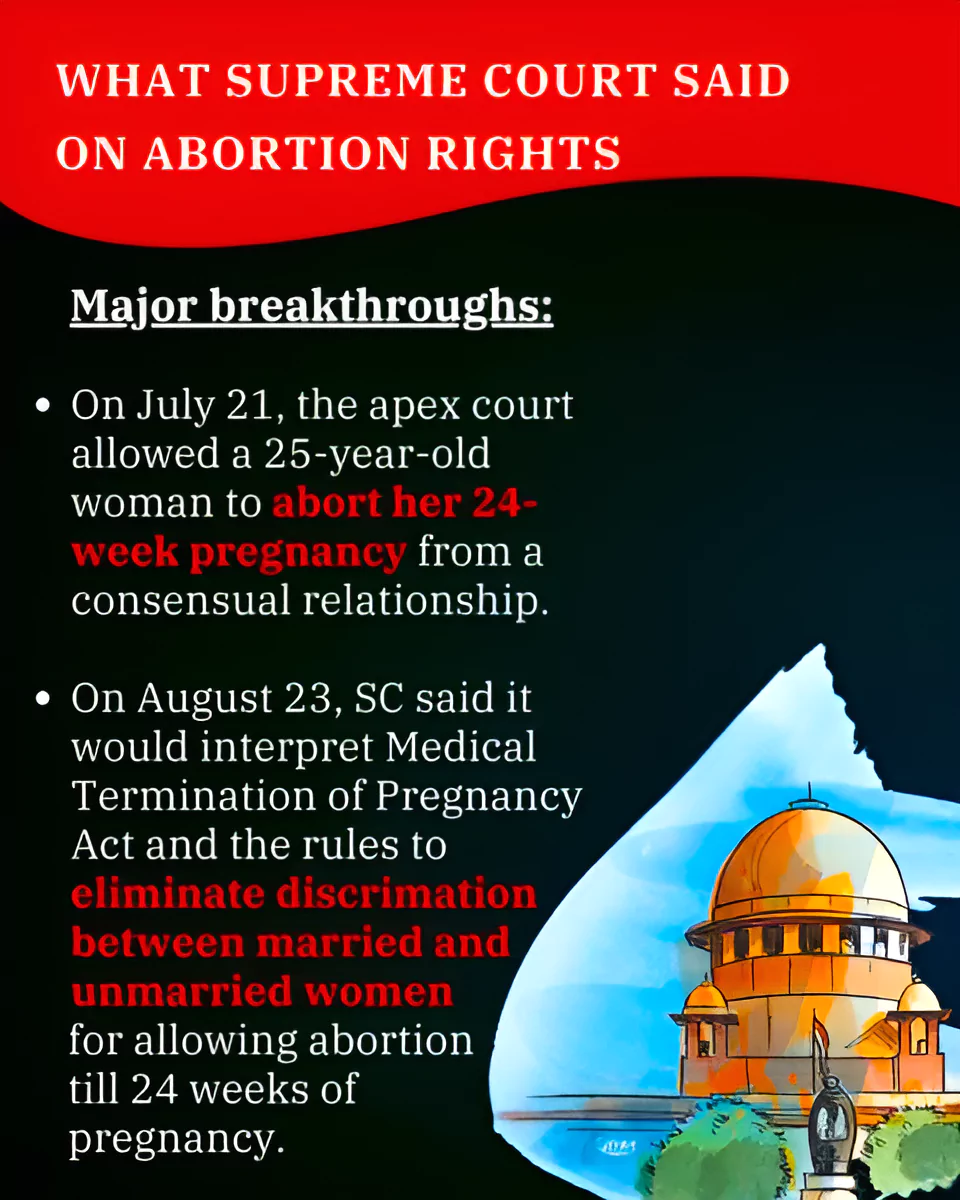
-
Suchita Srivastava vs Chandigarh Administration (2009):
-
High Court on its Own Motion vs State of Maharashtra (2018):
- It determined that forcing a woman to proceed with an undesired pregnancy infringes upon her bodily autonomy, increases her emotional distress, and adversely impacts her mental well-being due to the immediate societal, financial, and other repercussions associated with the pregnancy.
-
XYZ vs State of Maharashtra (2021):
- The Bombay HC allowed a 26th-week pregnant woman to abort considering her socio-economic condition and the impact of the continuation of pregnancy on her mental health.
-
X vs Principal Secretary, Health and Family Welfare, Government of NCT Delhi (2022):
- The Supreme Court gave the right to all women to terminate their pregnancy under the MTP Act, 1971 within 24 weeks of pregnancy.
|
Pro-Life vs Pro-Choice- A Case of Ethical Dilemma
- Pro-Life or Anti-Abortion Argument: They believe that abortion is always wrong. It is based on three principles: the Human Rights Principle, the Mens Rea Principle, and the Harm Principle.
- The Mens Rea Principle: It states that the agent’s intentions should be given weight. Thus, abortion violates this principle because the agent intentionally kills another, and the pregnancy is terminated deliberately and knowingly.
- The Harm Principle: It states that abortion violates the harm principle as “no one should inflict serious harm on other people.”
- The Human Principle: In the era of universal human rights, there can be no ‘right’ to take a human life.
- Pro-Choice Argument: Abortions, according to the absolutist pro-choice position, are ethically justifiable and, as a result, should be performed as long as the procedure is safe.
- Women Choice: The pro-choice argument states that the woman should be free to make her own decisions as an individual, and these decisions are considered self-regarding because the foetus is only a potential person, not the ‘other’ as the pro-life argument holds.
- Experts Views: Countries and Policymakers need to consider abortion legal and required.
- Prohibition to Abortion is not a Solution: According to experts, prohibiting or restricting abortion services does not eliminate the need for abortion.
- A Riskier Condition: Instead of limiting abortion rates, restricting abortion access raises the risk of unsafe procedures and creates the risk of enacting criminal laws that require people to report or be prosecuted for suspected abortions.
- These dangers disproportionately affect people who are poor or face systemic discrimination.
Arguments in Favour of Abortion
- Avoiding Unsafe Abortions: Legalizing abortion helps to prevent unsafe abortions, which can pose serious risks to women’s health and may lead to fatalities.
- According to the UN Population Fund: Close to eight women die every day in the country from causes related to unsafe abortions.
- According to a report published by the Center for Reproductive Rights: Legal and practical barriers are a serious impediment with unsafe abortions in India accounting for 20% of all maternal deaths.
- Bodily Autonomy: Abortion upholds a woman’s right to bodily autonomy, enabling her to make decisions about her own body and reproductive choices.
- In Suchita Srivastava and Anr Vs Chandigarh administration (2009): The Supreme Court asserted that a woman’s right to make reproductive choices is also a dimension of ‘personal liberty’, as understood under Article 21 of the Constitution of India.
- A Safe Access: The abnormalities are not always found up to 20 weeks, not allowing women a safe access to abortion puts her life in danger.
- Addressing Marital Rape Victims: Abortion should be accessible for women who may have conceived due to sexual assault or marital rape, respecting their mental and physical well-being and preventing further harm.
- For Self-Defence: Abortion is considered in relation to the “Doctrine of Double Effect”, which says that sometimes it is ethically acceptable if doing something morally good has morally bad side effect (Double effect) but it would not be permissible to cause such a harm as a means to bring about same good end.
- Choice and Life Course Impact: Allowing abortion provides individuals with the freedom to choose their life course, preventing unwanted pregnancies from adversely affecting education, career, and mental well-being.
- Changing Social Norms: Laws should adapt to changing social norms, acknowledging the prevalence of premarital sex, live-in relationships, and diverse family structures.
Arguments Against Abortion
- Religious Views: In many religions, it is believed that a child is created with god’s permission and abortion would result in disobeying god’s command.
- Against Human Rights: In the era of universal human rights, there can be no ‘right’ to take a human life.
- Foetal Pain: A foetus beyond 20 weeks of gestation may experience pain during abortion.
- Psychological Impact: Some argue that young women who undergo abortion may face an increased risk of subsequent depression.
- Reduced Adoptable Babies: Critics suggest that instead of abortion, women should consider giving unwanted babies up for adoption, as single parenthood becomes more accepted.
- Responsibility and Morality: Argues that individuals should accept responsibility for their actions and consequences, especially when becoming pregnant.
- Killing a foetus (an innocent human being) is morally wrong.
Way Forward to Abortion
-
Recognize Abortion as a Human Right:
-
Address Criminalisation of Abortion:
- The UN recognises that the criminalization of abortion is a form of gender-based violence and may violate women’s rights to health, dignity, autonomy, and equality.
-
Promote Societal Well-being:
- Right of abortion is not just only about human rights but also contributes to the overall well-being of societies.
-
WHO Recommendation:
- Decriminalisation of Abortion: The WHO recommends that States fully decriminalise abortion and remove grounds-based regulation and gestational limits to abortion (amongst others) to ensure non-discriminatory and equal abortion care to all.
- Enhance the Quality of Medical Practices: The guidelines recommend clinical best practices for safely terminating a pregnancy at any gestational age.
- No-Evidence Requirement: The WHO considers grounds-based control and gestational limits on abortion as “medically unnecessary policy barriers”, which are not evidence based.
-
Integration of Other Stakeholders:
- To address the understaffed issue, AYUSH practitioners and ASHA and ANM workers could be integrated in the termination of abortion process.
Conclusion
France’s amendment sets a welcome precedent, in which neither patriarchy nor morality gets to have a say in what is, essentially, a woman’s decision.
Also Read: Bilkis Bano Case: Rule Of Law Vs Right To Liberty
| Prelims PYQ (2017):
Which of the following gives ‘Global Gender Gap Index’ ranking to the countries of the world?
(a) World Economic Forum
(b) UN Human Rights Council
(c) UN Women
(d) World Health Organization
Ans: (a) |
![]() 6 Mar 2024
6 Mar 2024



 Unsafe Abortions: Around 45% of all abortions are unsafe, of which 97% take place in developing countries.
Unsafe Abortions: Around 45% of all abortions are unsafe, of which 97% take place in developing countries. 1971: Introduction and Passage of MTP Act
1971: Introduction and Passage of MTP Act

